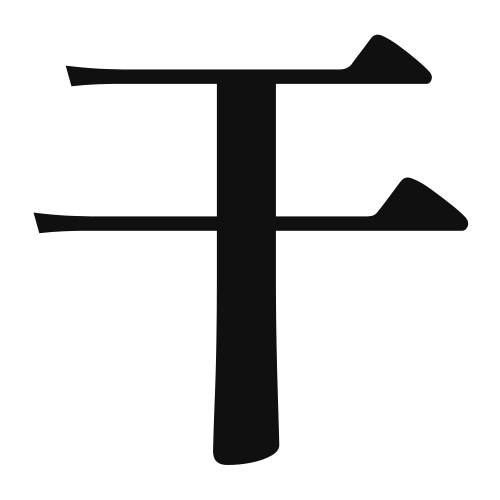1. Overview of Meaning
The kanji “干” (kanji reading: “kan” or “kan”) primarily means “to dry” or “to interfere.” It can also refer to “to be in charge of” or “to manage.” This character is often associated with actions related to drying or removing moisture.
2. Formation and Radical
Formation of the Kanji: The kanji “干” is classified as a pictogram, originally depicting a drying rack or a frame used for drying things. It represents the concept of drying or exposure to air.
Radical: The radical for “干” is also “干,” which is used in various kanji related to drying or managing.
3. Examples of Usage
Common Words and Phrases: Some frequently used words that include “干” are:
- 干物 (ひもの, himono) – dried fish
- 干渉 (かんしょう, kanshō) – interference
Example Sentences in Daily Conversation:
- この魚は干物です。 (このさかなはひものです。) – This fish is dried fish.
- 彼は私の仕事に干渉しないでください。 (かれはわたしのしごとにかんしょうしないでください。) – Please do not interfere with my work.
4. Synonyms and Antonyms
Similar Kanji: A kanji with a similar meaning is “乾” (kan), which also means “to dry” but is more commonly used in the context of drying something out completely.
Opposite Kanji: An antonym is “濡” (ぬれ, nure), which means “to wet” or “to moisten,” representing the opposite action of drying.
5. Cultural and Historical Background
Relation to Japanese Culture: The kanji “干” is often used in traditional Japanese practices, such as drying fish or vegetables, which are essential in Japanese cuisine.
Proverbs and Idioms: One common expression is “干物のような生活” (ひもののようなせいかつ, himono no yō na seikatsu), which translates to “a life like dried fish,” referring to a monotonous or uneventful life.
